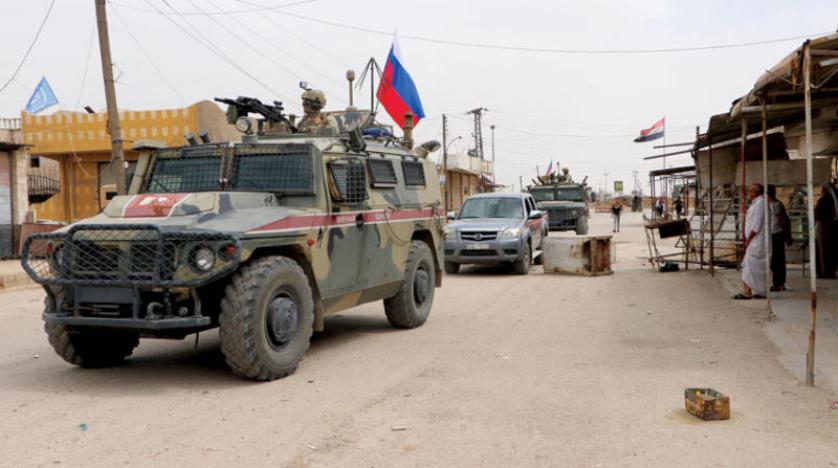Civilians returning to their homes in the al-Tay neighborhood of the northeastern Syrian city of Qamishli were shook by the putrid stench of gunpowder filling the air and finding their streets coated in scattered bullet shells.
Locals who fled violence are using the calm offered by a Russian-backed truce that ended days-long fighting between the Syrian regime and Kurdish forces to visit their homes in al-Tay.
While ruin left behind by fierce clashes at al-Tay painted a painful reflection of the nationwide damage caused by over a decade of civil war, Russian jets scrambled at low altitudes over the neighborhood.
Today, both pictures of Syrian President Bashar al-Assad and banners of the Kurdish internal security forces, called ‘Asayish,’ flood the streets of al-Tay.
Kurdish forces currently hold the greater part of the neighborhood overlooking the city’s airport.
Ashayish Spokesman Ali Al-Hassan reaffirmed that his forces “will hold their position in al-Tay after expelling all fighters of the pro-regime National Defense Forces (NDF).”
In a statement, Asayish advised uprooted locals planning to return to their homes in al-Tay to first check in at Kurdish-held security points to secure their entry and ensure the safety of their properties.
“The lesson in reaching any agreement is implementation,” Hasakah Governor Ghassan Khalil said.
Qamishli, where political disputes between the Syrian regime and the dominant Kurdish political group in the northeast spilled into violent clashes, administratively belongs to the war-torn country’s northeastern governorate of Hasakah.
“The agreement that was reached under Russian mediation calls for the withdrawal of militias from al-Tay, the return of people to their homes and the internal security forces taking over,” explained Khalil.
Speaking to Syrian Arabic language daily newspaper ‘Al-Watan,’ the governor noted that “the decision to remove Syrian Democratic Forces (SDF) from al-Tay is irreversible.”
He stressed that Russia is determined to implement the truce and restore power to state institutions and security forces in the city.
The Kurds, Syria’s largest ethnic minority and a major component of the US-backed SDF, have carved out a semi-autonomous enclave in Syria’s north since the outbreak of war in 2011.
In the area, the dominant Kurdish group, which has allied with the US to combat ISIS militants in the area, has developed its own administration and controls most of Syria’s oil resources.








































admin in: How the Muslim Brotherhood betrayed Saudi Arabia?
Great article with insight ...
https://www.viagrapascherfr.com/achat-sildenafil-pfizer-tarif/ in: Cross-region cooperation between anti-terrorism agencies needed
Hello there, just became aware of your blog through Google, and found ...